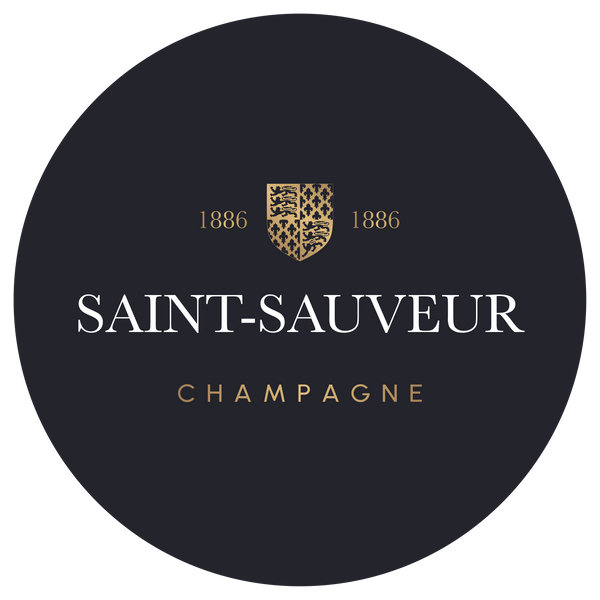Our History
Ferries since 1886 of an area dating back to the 11th century
Since 1886, our family has perpetuated through Maison Saint-Sauveur the wine-growing and oenological heritage of the eponymous abbey which dates back to the 11th century.
Our ancestors have owned vineyards since the middle of the 18th century, since 1754 to be precise.

It was in 1886 that our great-grandfather Thomas Charles, known as Edmond, bought the Saint-Sauveur estate from a certain Prin d'Origny.
Aside on the Benedictine abbey of Saint-Sauveur.
In 1080, the Count of Champagne, Thibaud I ordered the foundation of the Abbey of Saint-Sauveur; the Priory of which is still our working environment.
From the 11th century to the French Revolution, the Benedictine monks of Saint-Sauveur shared their daily lives between prayer and working in the vineyard following the rule of Saint Benedict. "Time and labor".
In 1360, Jean le Bon, King of France and second king of the Valois dynasty, gave the Abbey of Saint-Sauveur the right to bear its arms, to thank the monks for their contribution to the payment of his ransom after the Battle of Poitiers, against the English.
If after the second war of religion, the domain of Saint-Sauveur was devastated by the Huguenot troops of the Prince of Condé, the monastery was then rebuilt by papal order in the 17th century, taking the form that we know today.
In 1793 the Priory of Saint-Sauveur was sold as national property. The church was destroyed, only the abbey church escaped destruction.
A very tormented story... which is part of that of France.
From this history remain our cellars dating from the 18th century built in chalk, a one and a half hectare enclosure, unique in Champagne, the park (monks' cemetery for 800 years) and part of the farm buildings left as the monks had left them during the French Revolution.
Since 1886, five generations have succeeded one another in perpetuating this know-how preciously passed down over the centuries.
Faced with the phylloxera crisis between 1889 and 1890, our great-grandfather, Edmond, rebuilt the destroyed vineyard by initiating " modern" viticulture, with grafted plants, stakes and wire. His son, Frédéric, continued this work and their wines were present on the greatest tables: from European courts to the imperial court of Japan, until 1958.
1940: the terrible year; the Germans pillaged the estate during their invasion and occupied the Maison Saint-Sauveur.
André and Jean-Marie will then return to the essence of our family by refocusing on our different terroirs and by passionately focusing on the cultivation of the vine. Far from the lights, their methods are already avant-garde: harvesting at late and optimal maturity, plot-by-plot blends, etc.
The next generation is also represented by two brothers, nephews of André and Jean-Marie, who unite their tastes for oenology in the footsteps of the monks and our ancestors: Bernard and Vincent. The latter is joined by two of his children, Kathleen and Martin, in this resolutely family story.

Thus, we continue through our family under the names Thomas, Dieu, Prieur, and Lordon, the exploitation of the vines of the Saint-Sauveur estate with passion, in demanding and meticulous work, so that our vintages are synonymous with excellence and perfection.
Lordon family
